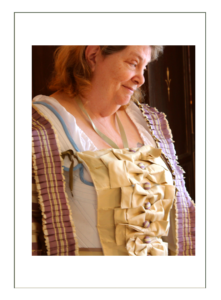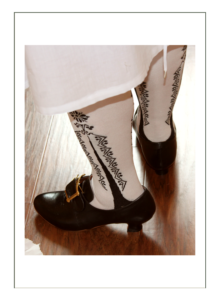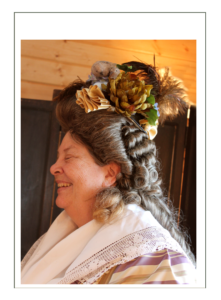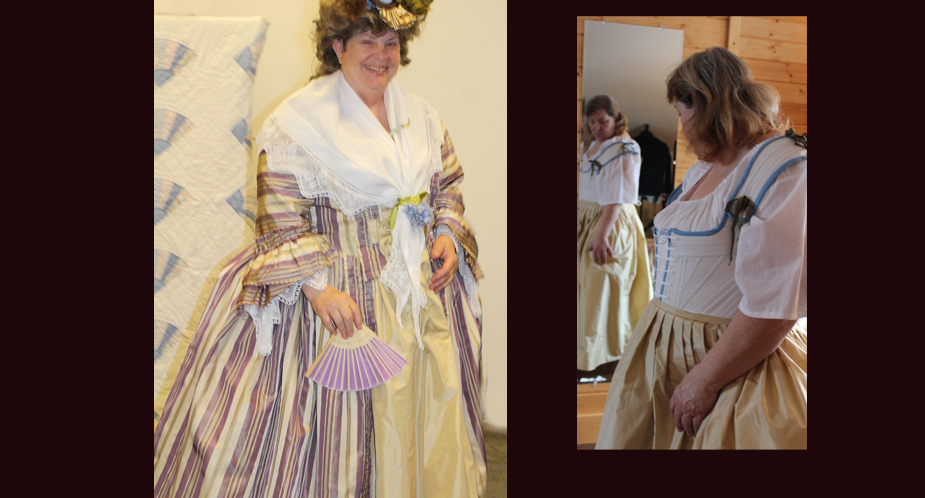… one of the first Buffalo Gals, depicts Mary Pegram, a real Revolutionary War ancestor. Mary was the daughter of an English nobleman who was hired by King George in the 1720’s to work with the Governor of what would become Dinwiddie County, Virginia, USA.
A strapping young surveyor (aka “tax collector for the King” because he knew property lines) stole her heart at a government party. Alas, as a native born Virginian and considered a commoner by the English, Mary’s father felt him unsuited for her hand and refused to permit the marriage.
Folk lore tells of young Pegram riding up to the Governor’s mansion on a horse in the dead of night and just taking young Mary to the local preacher, but records only show a marriage and the subsequent birth of 11 children over the next 13 years. Mary died young at the age of 56 (we can guess why) just as the Revolutionary War was ending in 1783.
Husband Pegram built a plantation in Dinwiddie County which still exists today, and one of their sons was a general in the War. Mary’s mother had redeveloped a relationship with Mary, and when Pappa died, Mother remarried and had children who would document Mary’s story.
A few years after Mary’s death, Pappa, big brother, and husband Pegram would make peace at last, and host Martin Luther’s emissary to hold secret gatherings of protestants in a time where they were discriminated against.
Mary’s many sons would populate Kentucky, Illinois, and Missouri as Presbyterian preachers. Their plantation would be the site of Civil War battles, and all documents regarding Mary and her family would be burned when the Union Army took down the Dinwiddie courthouse.



Carol wears her high fashion of the day wide paniers with pride. As society host in a small community of big status before, during, and after the war, Carol would bring her English Aristocratic ways and knowledge with her – along with connections to fine fabrics and information about what fashion was like in England and France.
The Mary Pegram depiction demands high fashion with some moderation to suit the new American world where she would be trying to fit in. She would have house slaves to attend and to wash, and would divide her time between running the household, having children, and holding social events suitable to her class status.
Mary would most certainly have worn stays that could accommodate pregnancy.

